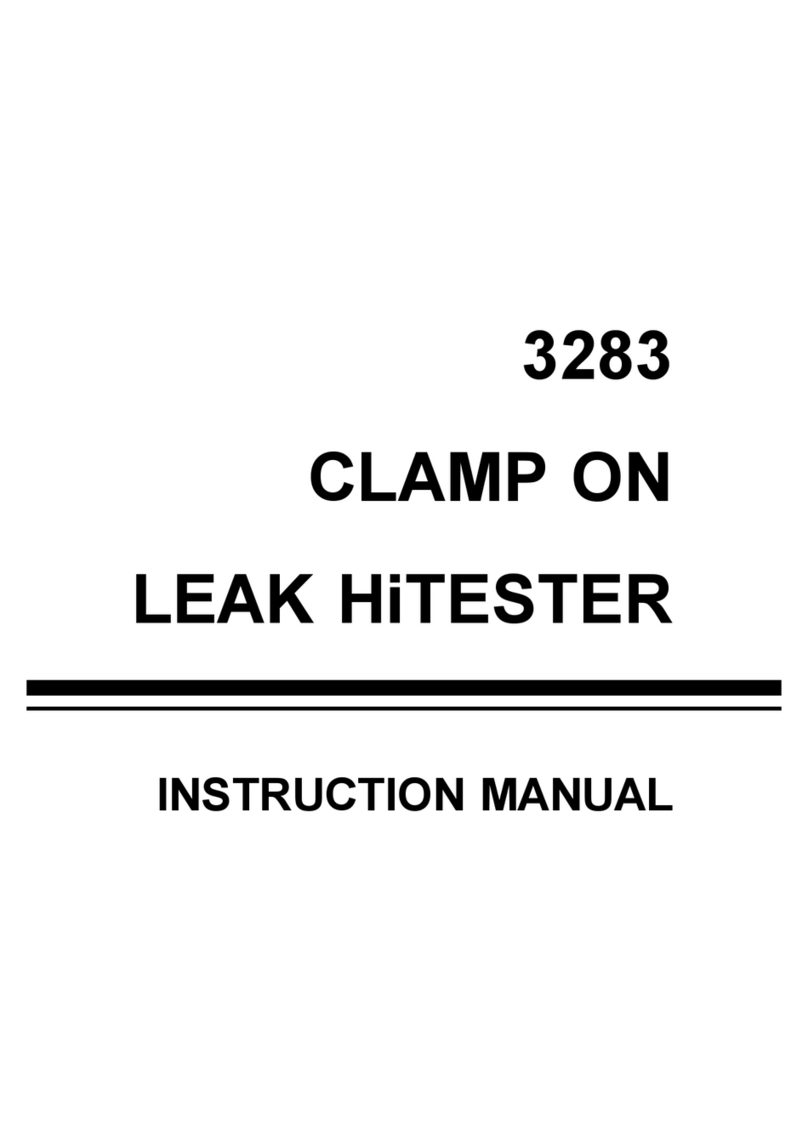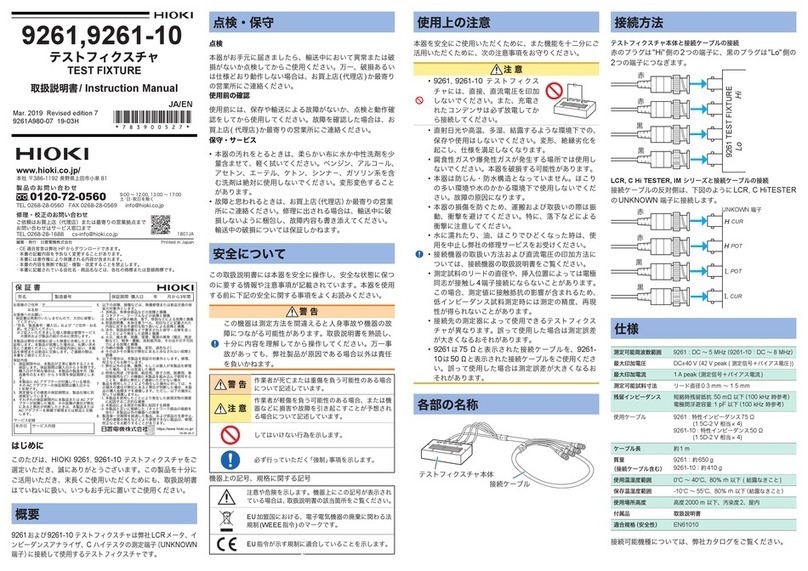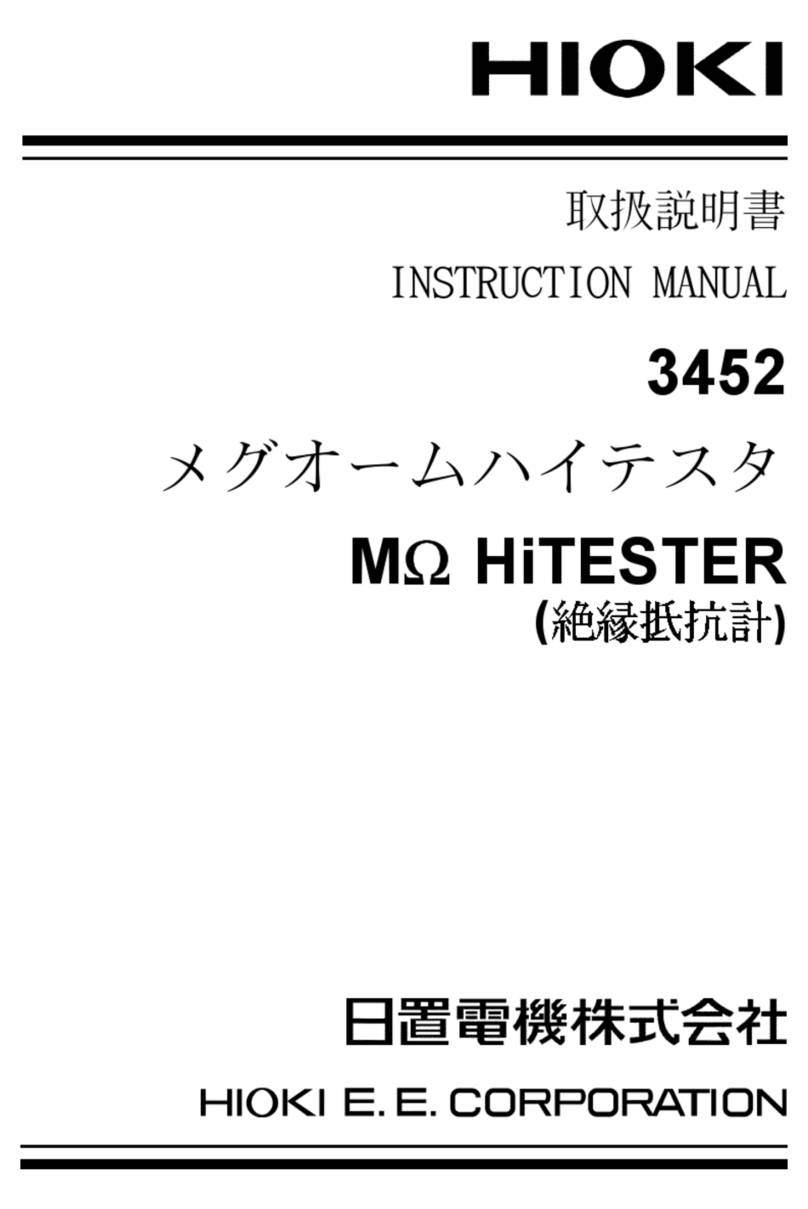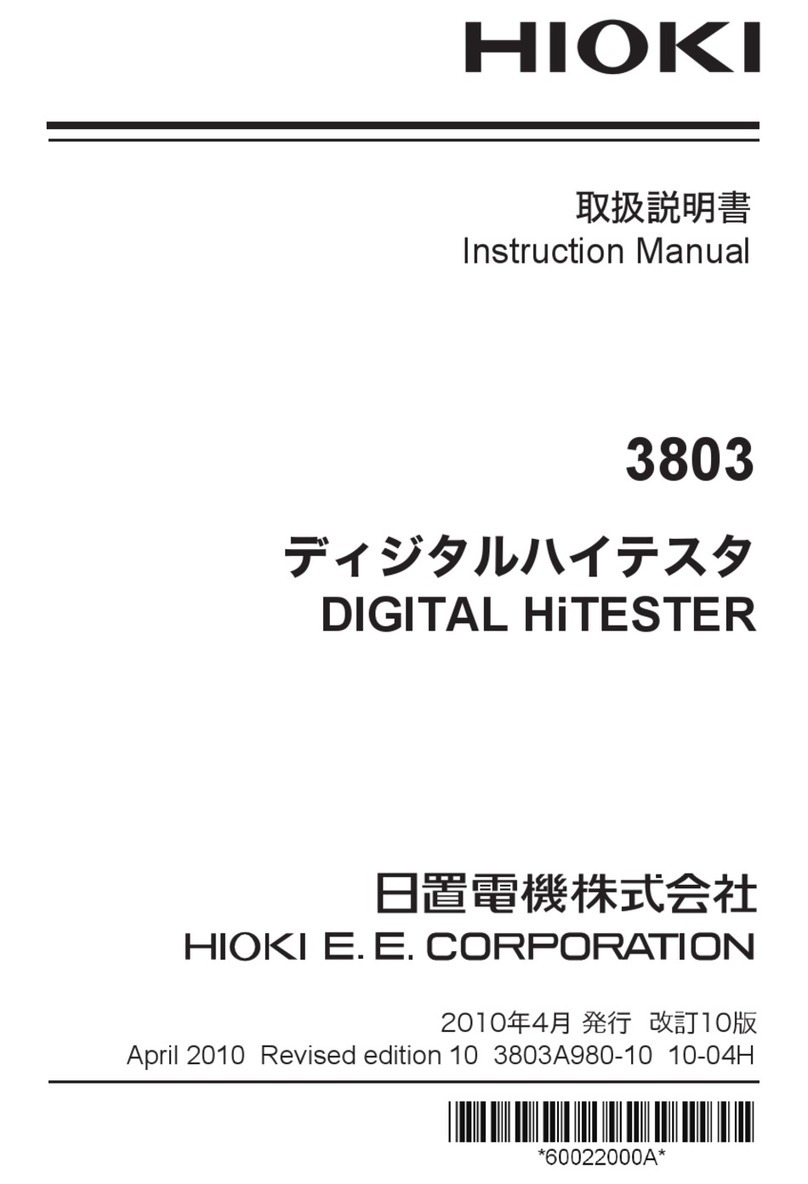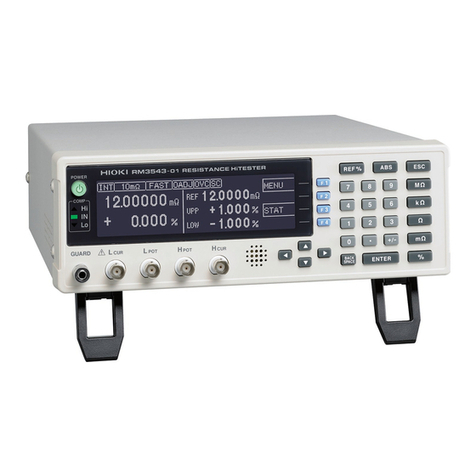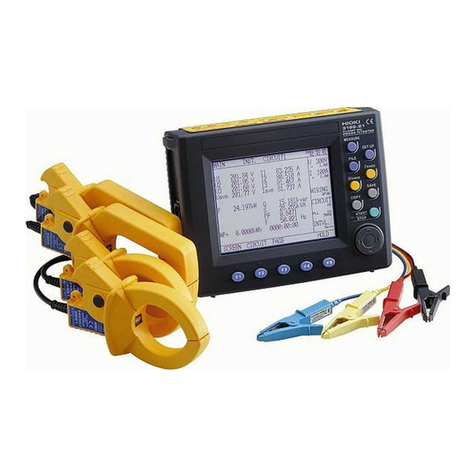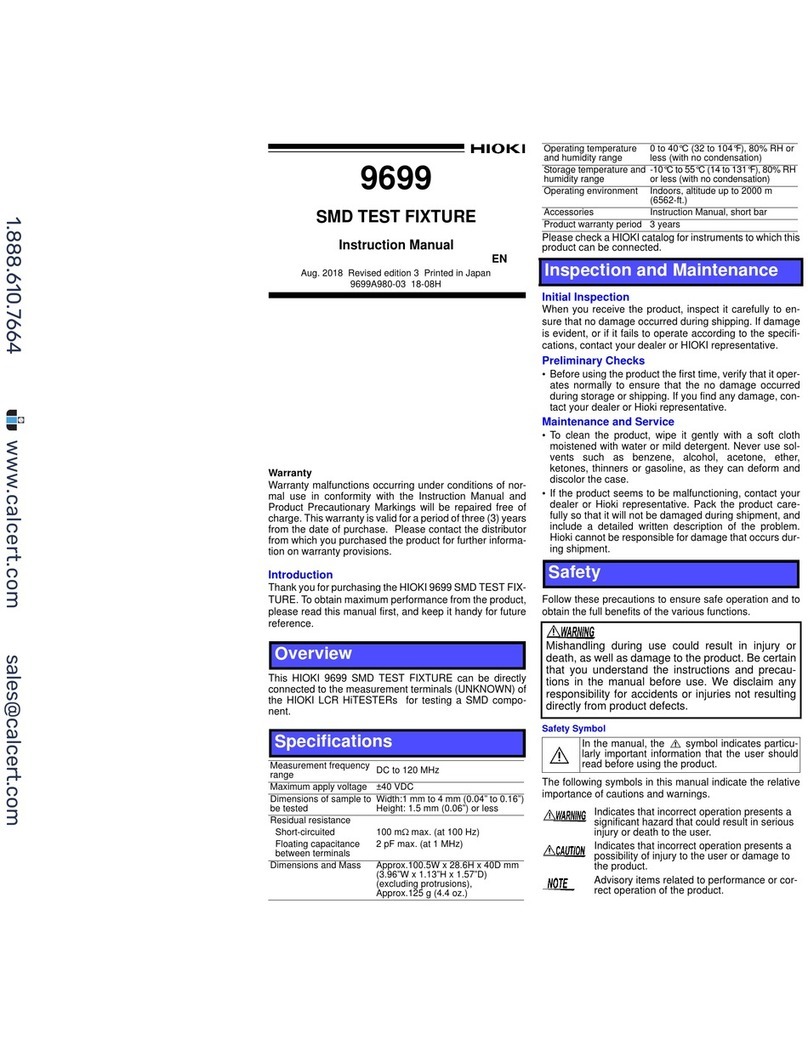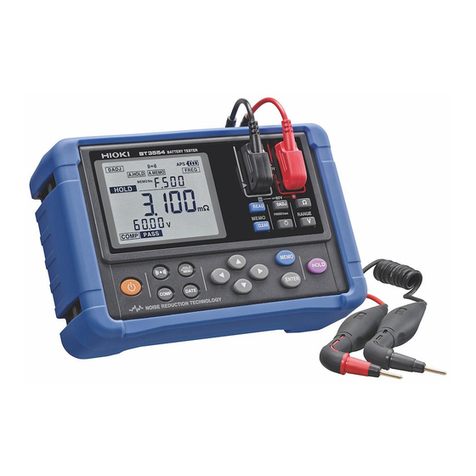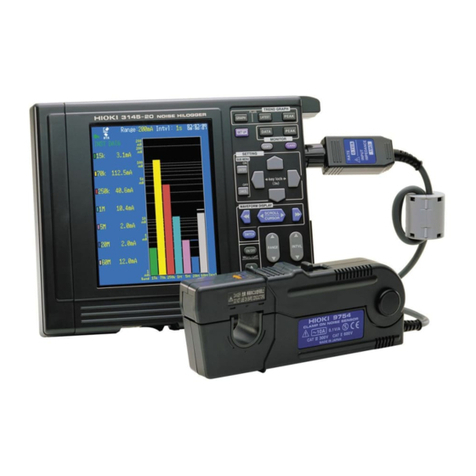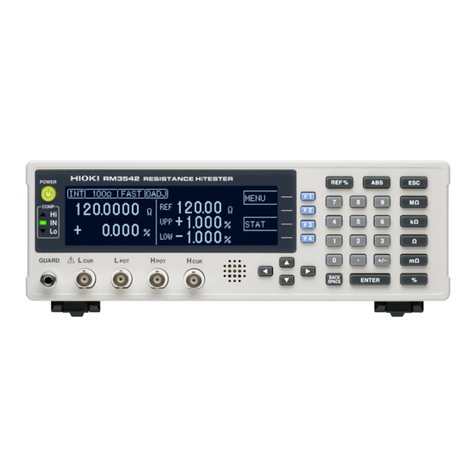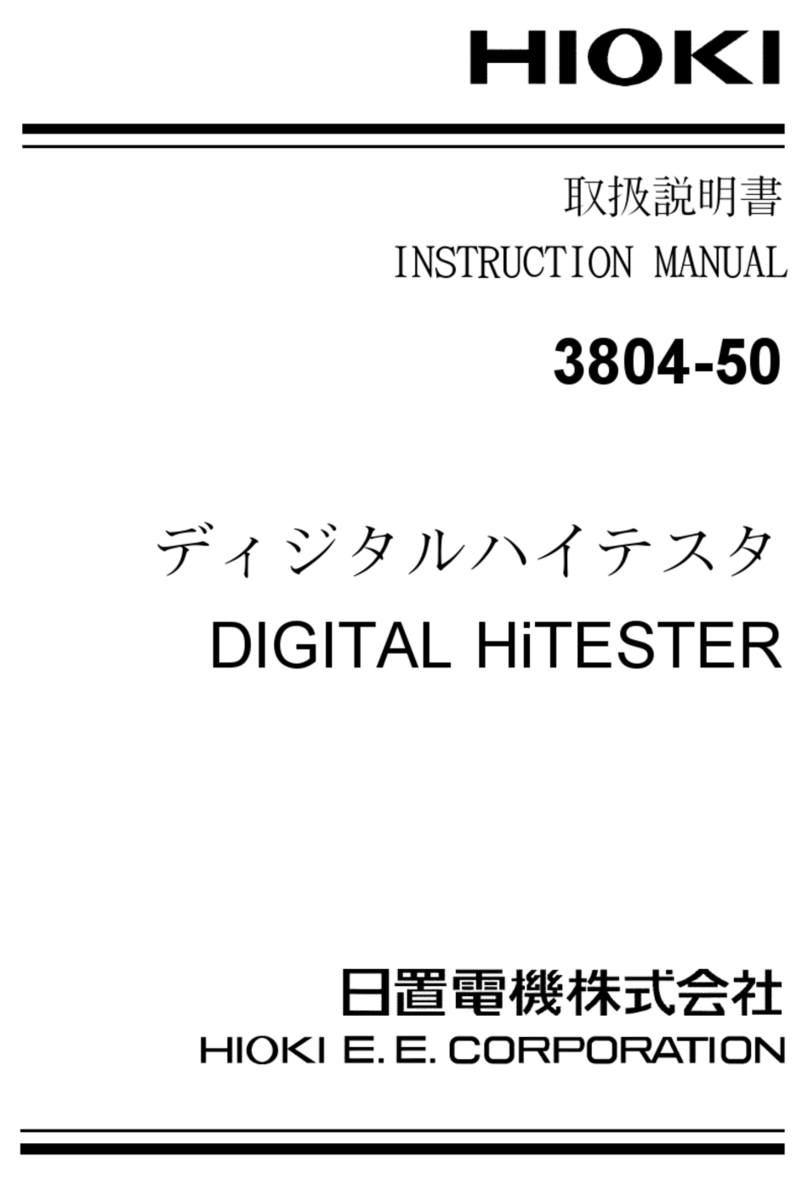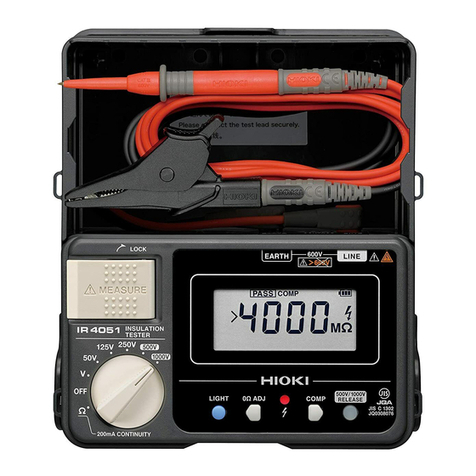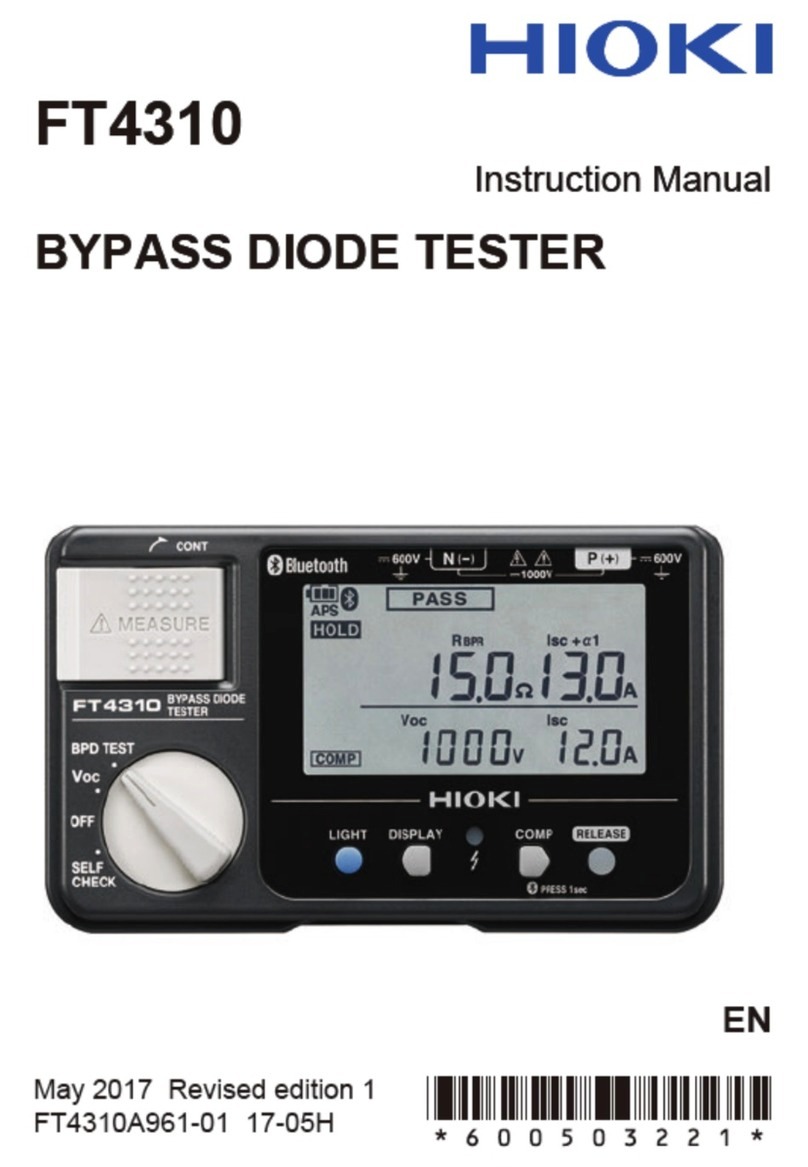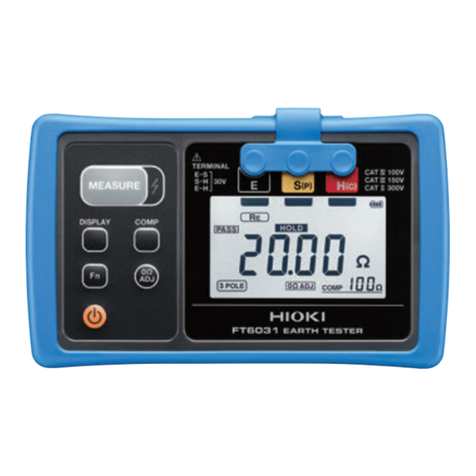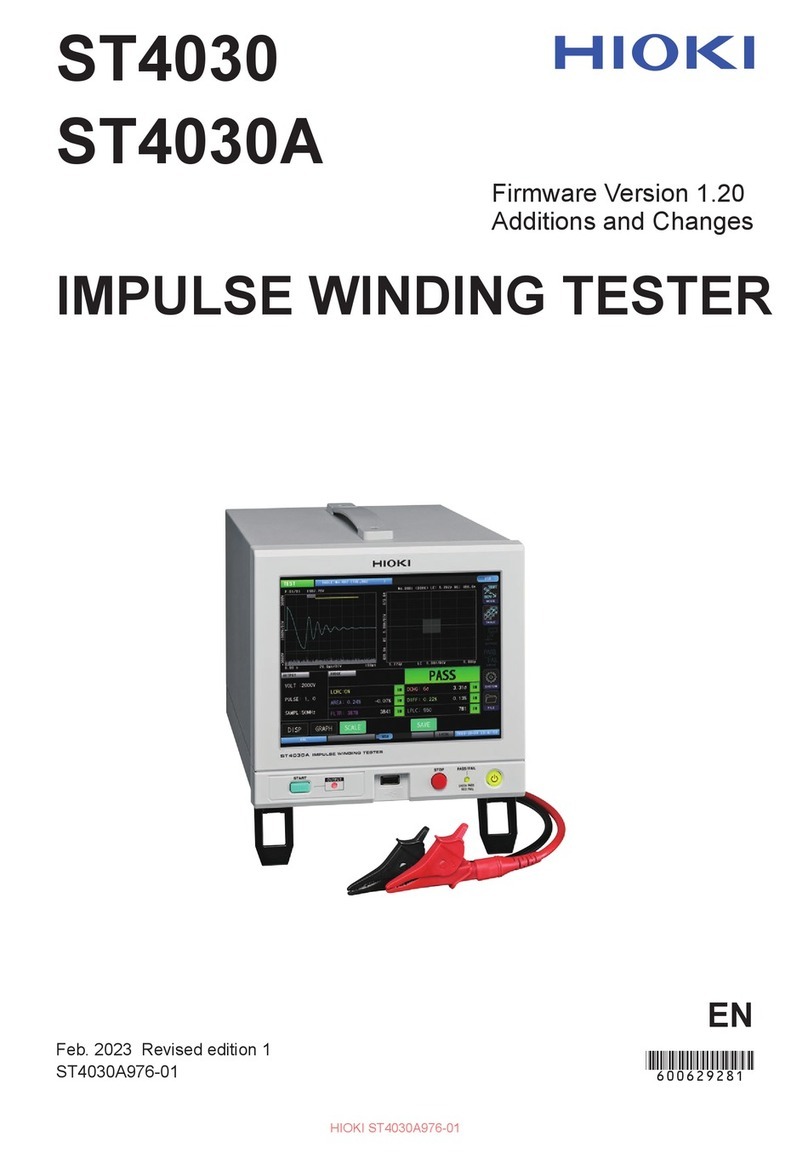
Command Message List
6
1. Sourcing
1-1. Normal source
Command Message List
Command Description Formats
FCC Set the source function.
The setting value will be 0, the output will be "OFF."
d1 (Setting of source function: 0 to 4)
0: CV:2.5V
1: CV:25V
2: CC:25mA
3: TC:0°C
4: TC:RJ
[Format]
FCC d1
d1: NR1 format
[Response]
OK or CMD ERR
FCC? Query the setting of source function.
The contents of responses are the same as the settings. [Format]
FCC?
[Response]
d1: NR1 format
OUT Set the output ON or OFF
d1 (Setting of output: 0 to 1)
0: OFF
1: ON
A CMD ERR response is issued in the following situations.
Furthermore, bit2 of the ERR? Query is 1.
1. When all memory is SKIP in recall source mode or scan
source mode
2. In the battery low status
3. In TC:RJ function, when no temperature probe is
connected or the measurement temperature is outside
the -25°C to 80°C range
4. In TC:RJ function, when the thermocouple type is B and
the measurement temperature is less than 0 ºC
[Format]
OUT d1
d1: NR1 format
[Response]
OK or CMD ERR
OUT? Query the output setting
The contents of responses are the same as the settings. [Format]
OUT?
[Response]
d1: NR1 format
CVV Set the source voltage value
This command is valid only in CV:2.5V or CV:25V.
d1 (Source voltage value (in CV:2.5V): unit; V)
-2.5000 to 2.5000
d1 (Source voltage value (in CV:25V): unit; V)
-25.000 to 25.000
[Format]
CVV d1
d1: NR2 format
[Response]
OK or CMD ERR
CVV? Query the source voltage value
This command is valid only in CV:2.5V or CV:25V.
The contents of responses are the same as the settings.
[Format]
CVV?
[Response]
d1: NR2 format
or
d1: SKIP (ASCII format, when a
skip setting in memory
source)
